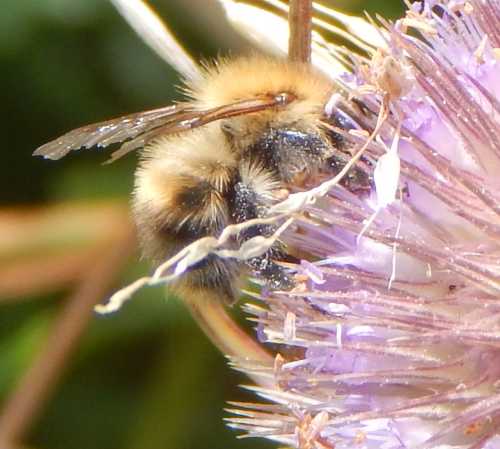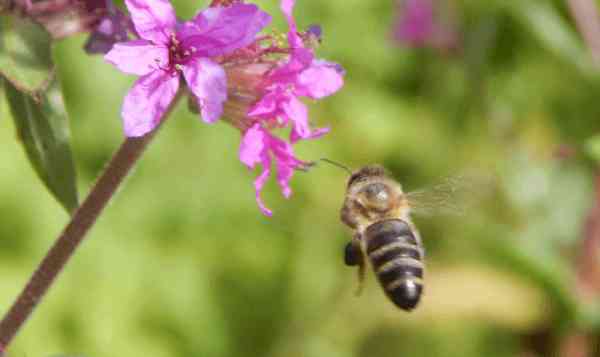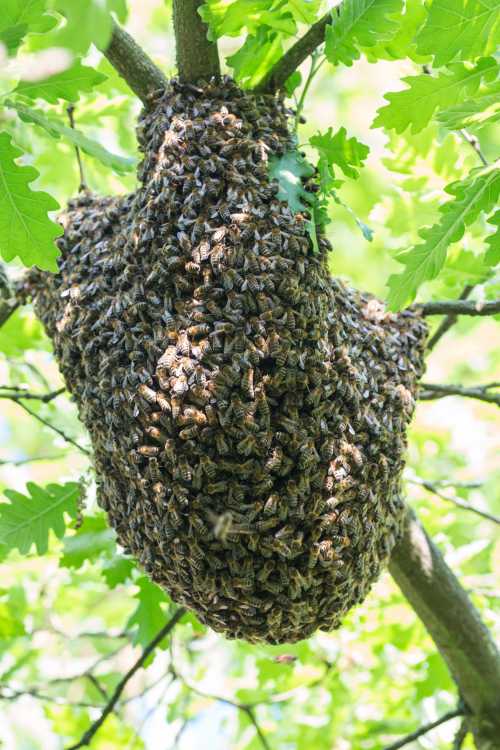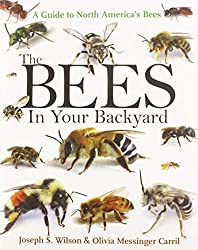How Do Bees Locate Flowers?
It's well known that bees need nectar and pollen to feed themselves and rear their young. In order to gather what they need, they must seek out the best flowers on which to forage.
However, flowers are not all of equal value to bees, and evidently, bees may prefer to visit some flowers and not others, so how do bees locate flowers in the first place?
How bees use of vision and scent to locate flowers
Gardens and countryside display a wide variety of wildflowers, herbs, shrubs and trees.
Some bee species will visit multiple flower types, whilst other are more choosey, visiting exclusively one or two flower species or genres.
Bees must therefore use a variety of senses and skills to successfully locate flowers.
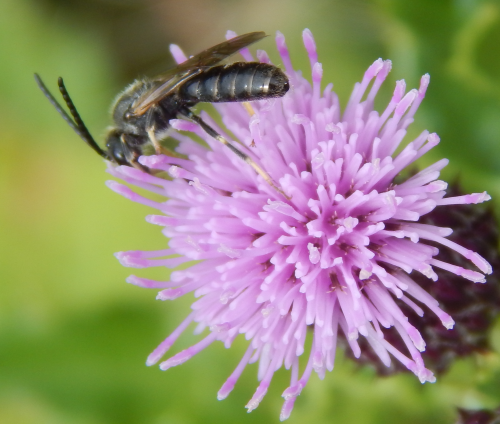 How do bees like the Chalk Furrow Bee - Lasioglossum fulvicorne, locate flowers?
How do bees like the Chalk Furrow Bee - Lasioglossum fulvicorne, locate flowers?
Ted Benton, author of Solitary Bees, notes that little work has been undertaken on solitary bees compared with honey bees and bumble bees, but he states that all evidence suggests there are broad similarities across all types of bees in their perceptual abilities and in the way these abilities are used in foraging.
In particular, Benton notes:
- The compound eyes detect movement, shapes and discriminate between shades of color.
- Whilst at a distance, bees are attracted to floral displays primarily through color and shape.
- As bees get closer to flowers, scent plays an increasingly important role. Scent is primarily picked up by the antennae.
- Many flowers have visual guide marks in their flowers (a contributory reason as to why bees visit red flowers, despite officially not being able to see the color red). Benton notes that frequently, the scent trails of a flower follow the visual guide marks, thus complementing the visual information for foraging bees.
- Some bee species deposit chemicals (pheromones) onto the flowers they visit, thus providing signals to other bees of the same species. Benton notes that Macropis europea deposit scents that are attractive to both females and males that relate to the distinctive mating system of this species.
- Benton states that whilst some species follow regular foraging routes, and presumably recall and recognize landmarks, he also suggests that there is no reason why solitary bees should not have an ability comparable with honey bees, which are known to be able to steer by the position of the sun, adjusted by time of day.
Foraging and communication within bee colonies
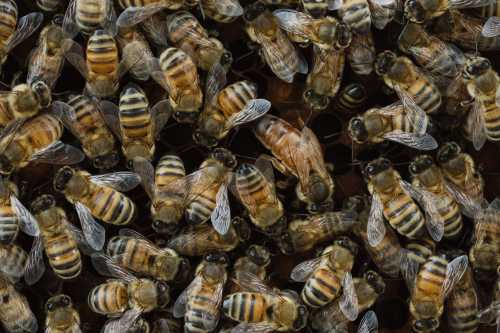
Sometimes bees may be able to locate flowers because they receive instructions from fellow colony members about the specific location, as is the case with honey bees.
Honey bees are known for their hive mind, in particular with regard to activities such as swarming.
However, as stated above, it's well known that honey bee workers use the sun adjusted by time of day, and that they can communicate complex information with other worker honey bees back at the hive.
When worker bees return form a successful foraging trip, they communicate with other worker honey bees back at the hive.
In doing so, they help other workers locate flowers via a dance, that tells fellow workers the whereabouts of the patch of food-rich flowers they found.
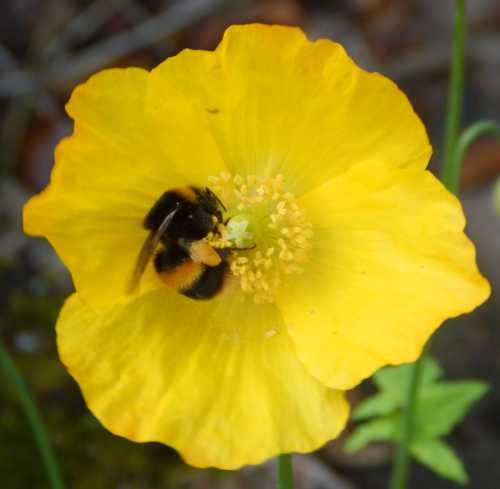
But what about bumble bees?
Interestingly, Dave Goulson notes in his book, Bumblebees Behaviour And Ecology, that according to research, whilst bumble bees do not engage in a complex waggle dance like honey bees, foraging bumble bee workers, do have a simplified dance in which they communicate the scent of a source of food they have located.
The dance stimulates workers back at the nest to leave the nest and forage for the scent, although as far as we know, it does not provide fellow colony members with the specific location of the flowers.
Goulson also writes that that flowers can be more difficult to locate, if for example, a preferred yellow flower is situated among flowers of the same color. Small flowers of different species but with similar colors, are likely to be indistinguishable for bumble bees until at very close range.
Goulson proposes that honey bees, bumble bees and solitary species are able to discriminate between age classes of flowers using visual cues, hence enabling them to preferentially select more rewarding flowers.
For example, Pulmonaria flowers change from red to blue with age, enabling bumble bees and flower bees (Anthophora plumipes) to select the more rewarding flowers.
If you found this page helpful or interesting, I'd really be grateful if you would share it with others - if not this page, perhaps another, such as Gardening For Bees.
Thank you so much :) .
